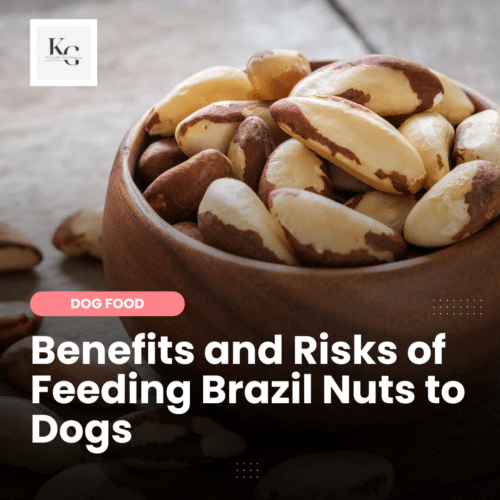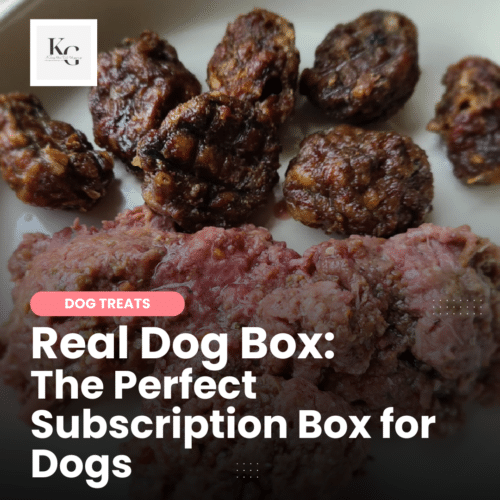Keep the Tail Wagging is supported by pet parents. I occasionally earn a commission (at no additional cost to you) when you click through an affiliate link to one of my favorite products. Thank you for your support. Read More
Two common questions from dog owners are “How much raw should I feed my dog?” and “How much does raw feeding cost?” Several raw feeding calculators are available online, and most follow a percentage by body weight calculation based on a dog's age and activity level. I've created the following raw feeding charts to give you an idea of what and how much raw to feed your dog.
Why I Feed My Dogs Raw
I was initially drawn to raw feeding to heal a dog with digestive issues. Thanks to feeding fresh food, Rodrigo lived more than ten years longer than a veterinarian predicted. I transitioned my dogs to raw in 2013, and over that time, I've seen the following benefits:
- improved gut health
- improved immune system
- decreased inflammation
- small, less smelly poop
- gorgeous coat, healthy skin
- decreased allergy symptoms
- no fleas and ticks (knock on wood)
- slowed aging
- fewer veterinarian visits
As I stated, the dog who inspired this change lived 10-1/2 years longer than predicted. I've lost two dogs to cancer; one lived five weeks longer than expected, and the other lived 1-1/2 years longer than expected. I credit this to feeding fresh food, using whole food supplements that promote a healthy gut microbiome, encouraging a robust immune system, and promoting overall wellness.
What I Feed My Raw Fed Dogs
I start with a foundation of 80% muscle meat, 10% organ meat, and 10% bone. I mix in a base mix by Dr. Harvey's and boiled canned oysters (for zinc). In my dogs' individual meals, I add seafood, fur (rabbit feet), a chicken egg, duck feet, and other “side dishes.” I weigh their meals to avoid overfeeding.
Here are a few examples of what I feed my dogs; this list is based on what's available in my area and is within my budget.
- Proteins: beef, duck, emu, guinea hen, pheasant, pork, rabbit, venison
- Raw Meaty Bones: quail, cornish game hen, pork ribs, duck frames, duck feet, duck necks, rabbit feet
- Organs: beef (heart, lungs, liver, spleen, pancreas, green tripe)*, lamb (heart, liver, kidneys), pork (heart, liver, kidneys)
- Seafood: green-lipped mussels (cooked/frozen), mackerel (canned and fresh), oysters (boiled/canned), salmon (canned), sardines (canned and fresh)
- Vegetables (grown in my garden): cabbage, carrots, celery, collard greens, kale, tomatoes (ripe), yellow squash, zucchini
I do not follow the instructions for the base mix, which is intended to add to muscle meat alone. Because my dogs are gaining nutrients from an 80/10/10 blend and oysters, I feel comfortable using less base mix. I have confirmed that the diet I've formulated for my dogs is meeting their nutritional needs. I alternate the main protein every five days.
*Heart and green tripe are traditionally fed as muscle meat; I include them as organs because they are included in a blend I order through my local raw food co-op.
How I Use a Base Mix
Because I start with 80% muscle meat, 10% bone, and 10% organ meat, I use less of the base mix than is recommended on the bag. Don't bother trying to calculate 80/10/10 -instead, visit the Feed Real Institute's calculator, which will help you calculate the amounts needed in a recipe.
For every 10-15 pounds of an 80/10/10 blend, I add 1-1/2 to 2 cups of base mix and one can of boiled oysters. That's it.
Occasionally, I'll mix in other ingredients to try something new with my dogs, but not very often.
Supplements I Give to My Dogs
There are many amazing supplements, and I like to alternate between several brands. However, I have two main supplements that I use daily with my dogs:
Daily Dawg by Real Mushrooms is a comprehensive, veterinary-curated blend of extracts for your dog's general health maintenance made with certified organic mushrooms, antioxidants, and herbal adaptogens.
- gut health, immune system, joint and muscle health, protects against free radicals, hormonal and stress management, cognitive health, and promotes a natural detox
Gussy's Gut Daily is an organic blend of freeze-dried vegetables and other whole-food ingredients that support gut health, promote a healthy detox, and protect against free radicals while supporting overall health and wellness.
How Much I Feed My Raw Fed Dogs
When calculating how much to feed my dogs, I alternate between low activity (winter months, very hot days) and moderate activity. If a healthy dog needs to lose weight, I'll decrease their meals slightly and increase exercise; if a dog needs to gain weight, I feed more food.
Activity Levels for Dogs
Three activity levels are often referenced when determining how much to feed our dogs.
- Low Activity – less than an hour of exercise daily; a regular walk on a lead
- Moderate Activity – 1 to 3 hours daily; multiple walks, visits to dog parks, easy hikes, running around a large property
- High Activity – 3 to 6 hours daily; this is typically a working dog
I suspect most dogs fall into the “low activity” and “moderate activity” columns noted below. However, that's not where it ends because each dog is unique. The activity levels give us an idea of how many calories a dog may burn daily, but I've learned to monitor each dog's weight and adjust how much I feed to prevent weight gain or loss.
The following chart calculates the amount of food fed daily based on a dog's weight and activity level.
How Much Raw Dog Food Costs
The cost of raw dog food depends on what you're feeding and how much. For example, feeding commercial raw to a small breed dog will be less costly than feeding commercial raw to a giant breed dog. Connections with homesteaders, farmers, and hunters may allow you to buy muscle meat, organ meat, and bones at a lower cost than buying these ingredients at the grocery store.
On average, I try to keep my budget at $325 per month for my large dogs. Most of the time, I can stay within my budget by feeding DIY raw dog food instead of commercial raw, and only shopping through a local raw food co-op and sales, stocking up on food, treats, and supplements when marked down significantly.
At the time of this post, I had three dogs that weighed between 55 lbs and 80 lbs. They eat four pounds of food daily unless I'm feeding Solutions Pet Food, which is more nutrient-dense. When feeding Solutions, I feed 2.16 pounds daily.
My 2024 Raw Feeding Budget
1 – RAW DOG FOOD: I spend approximately $700 per quarter on ingredients to make dog food and treats. There are commercial brands in my budget, but these are supplemental blends, not complete meals. I also buy individual ingredients. The only premade, complete raw brand I purchase is Solutions Pet Food. I purchase 1 case per quarter at a local pet store at 20% off. I buy treats at the same sale. I also stock up on items at outlet grocery stores and ethnic markets.
2 – REAL DOG BOX: I spend $60 monthly on a Real Dog Box subscription for treats and chews. My subscription includes a wellness package because I belong to their affiliate program.
3 – SUPPLEMENTATION: I spend approximately $400/year on supplementation. I buy in bulk on BOGO sales. I also get special discounts from some brands I cannot share.
4 – FREE PRODUCTS: I get free products from brands in exchange for promotion, working events, writing articles, and their generosity. I've chosen to take free products over payment because I'd use the money to buy the products anyway.
This isn't something everyone can do. I have been granted this lavish perk because of my years in the industry, blogging experience, and following. This is why some brands have also given me special discount codes to pass along. Subscribe to my free newsletter for discounts.
5 – FRIENDS WITH FARMS: Finally, my friends raise their animals, fish, and hunt. I can secure free meat, organ meat, and seafood from these sources.
MY TOTAL BUDGET: I spend approximately $325/month, but it can increase depending on my dogs' needs. My budget does not include vet appointments, testing kits, pet insurance, dog toys, or our dog walker.
Where I Source My Dog's Food
If you live in Western Washington, the following list will be helpful. However, if you live in another state, you can still get some ideas from my favorite sources.
- WAZZUOR – local raw food co-op (membership required)
- outlet grocery stores (Winco, Grocery Store Bargain Market)
- restaurant supply store (US Foods Chef's Store)
- Wild Wednesday, Julz Animal Houz
- local farms, homesteaders, hunters*
*you can connect with local farms, homesteaders, and hunters through social media groups or by placing an ad on the Facebook Marketplace or Craigslist.

















